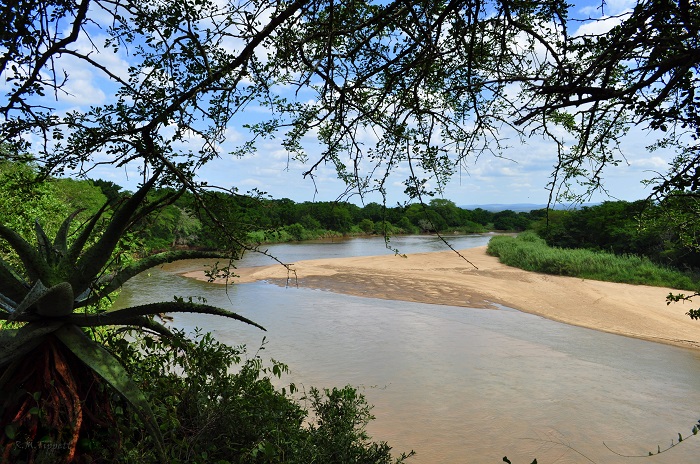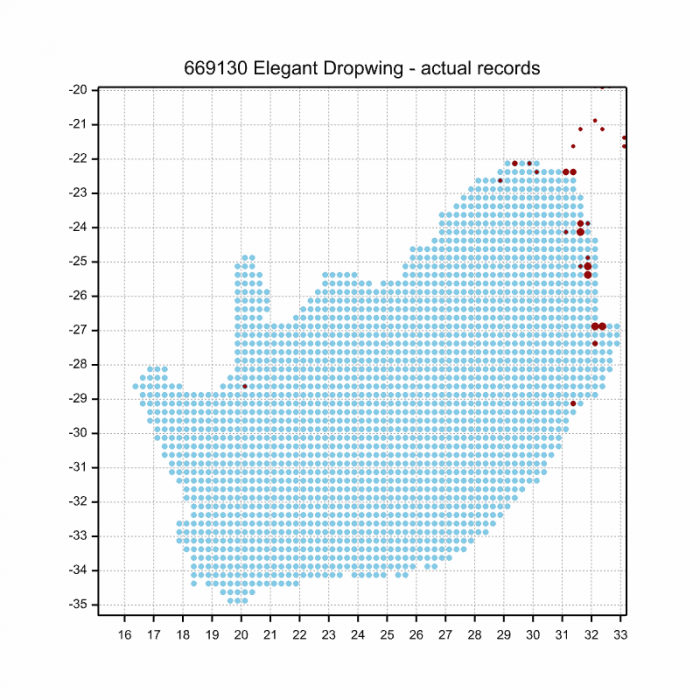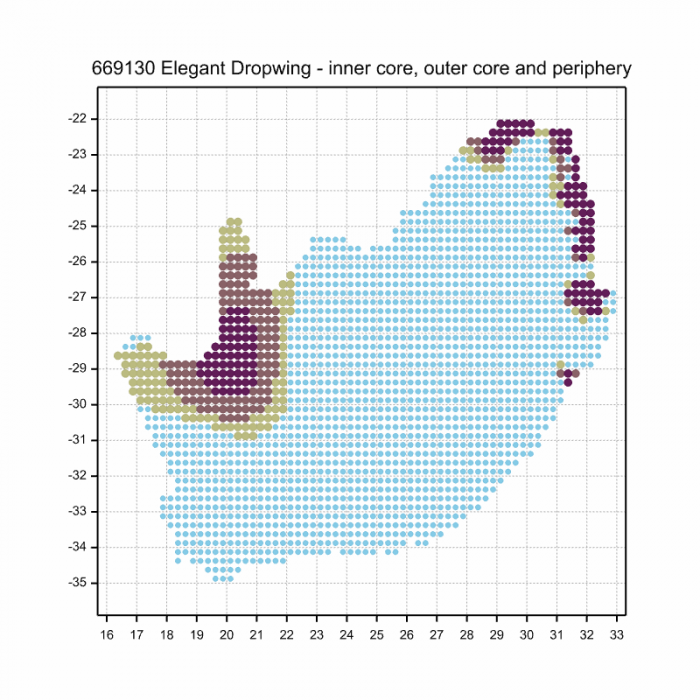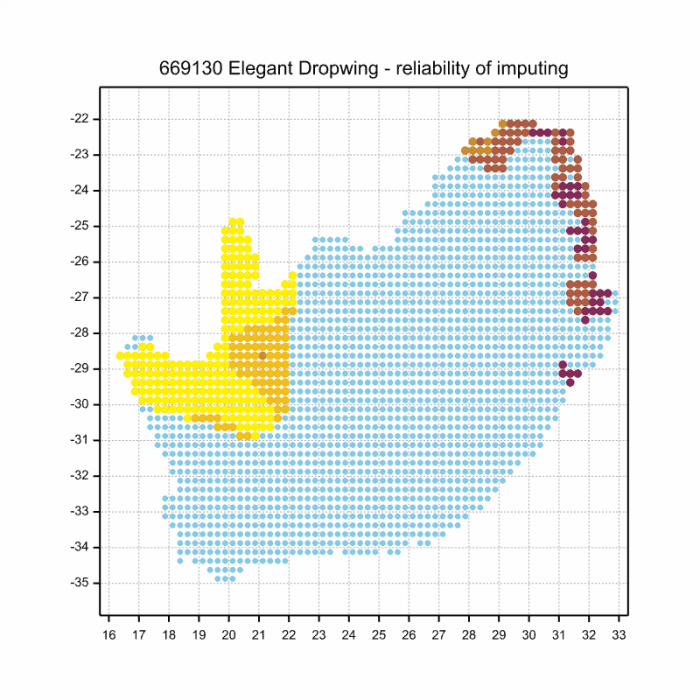View the above photo record (by Eugene Troskie) in OdonataMAP here.
Find the Elegant Dropwing in the FBIS database (Freshwater Biodiversity Information System) here.
Family Libellulidae
Trithemis werneri – ELEGANT DROPWING
Identification
Small size
Length up to 40mm; Wingspan attains 66mm.
Males are readily identified by their orange colouration with black markings, and large amber hindwing patch.
Females are less distinctive and are most similar to Trithemis annulata (Violet Dropwing) and Trithemis pluvialis (Russet Dropwing). They can be identified based on abdomen and thorax patterns, and amber patches at the base of the hind wings. Some females also have small amber patches in the outer wings.
Click here for more details on identification.

Ndumo Game Reserve, KwaZulu-Natal
Photo by Ryan Tippett
Habitat
Its natural habitats are large tropical and subtropical rivers in hot savanna regions. It inhabits well wooded areas with large trees along the upper banks. Frequently found along river sections with steep banks.

Photo by Ryan Tippett
Behaviour
Most often found perched on trees and large bushes away from the water and above the riverbanks. Individuals may be found more than 100m from the river. Both sexes occur in the same vicinity. Frequently perches high up in the outer canopy of riverine trees where it is inconspicuous. Skypoints from the tips of branches during the heat of the day. Seldom seen at the waters edge.
Status and Conservation
Trithemis werneri is uncommon and very localised in South Africa. This species is only known from undisturbed habitats and is not tolerant of habitat degradation. It is listed as of Least Concern in the IUCN Red List of Threatened Species. However, the South African population is considered Near Threatened due to its marginal occurrence and dependence on pristine habitats.
Distribution
The Elegant Dropwing is sparsely distributed and is found mostly in Eastern and Southern Africa. It occurs from southern Sudan down to extreme northern KwaZulu-Natal in South Africa. There are also outlying populations in Angola and north-western Namibia.
Below is a map showing the distribution of records in South Africa for Trithemis werneri. Taken from the OdonataMAP database as at February 2020.

The next map below is an imputed map, produced by an interpolation algorithm, which attempts to generate a full distribution map from the partial information in the map above. This map will be improved by the submission of records to the OdonataMAP section of the Virtual Museum.


Ultimately, we will produce a series of maps for all the odonata species in the region. The current algorithm is a new algorithm. The objective is mainly to produce “smoothed” maps that could go into a field guide for odonata. This basic version of the algorithm (as mapped above) does not make use of “explanatory variables” (e.g. altitude, terrain roughness, presence of freshwater — we will be producing maps that take these variables into account soon). Currently, it only makes use of the OdonataMAP records for the species being mapped, as well as all the other records of all other species. The basic maps are “optimistic” and will generally show ranges to be larger than what they probably are.
These maps use the data in the OdonataMAP section of the Virtual Museum, and also the database assembled by the previous JRS funded project, which was led by Professor Michael Samways and Dr KD Dijkstra.

